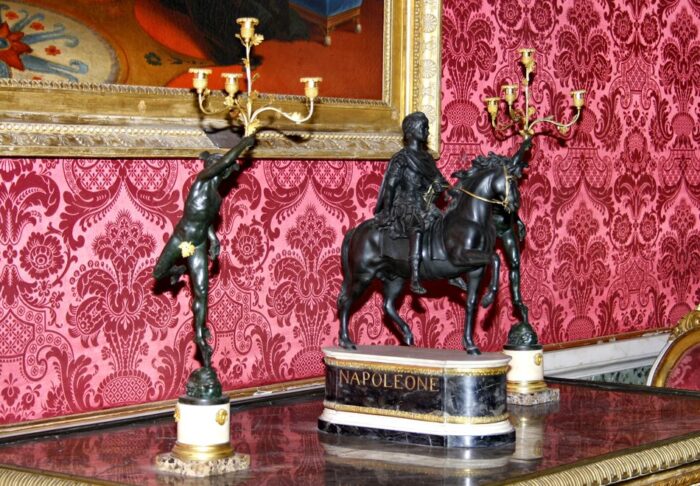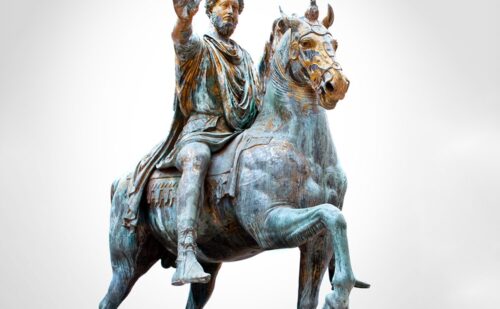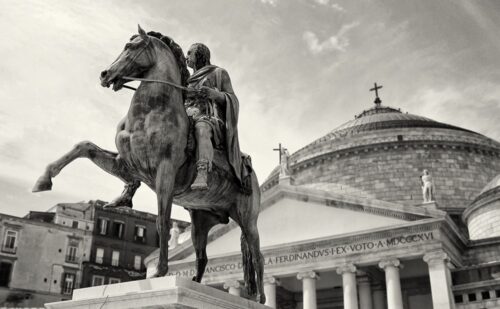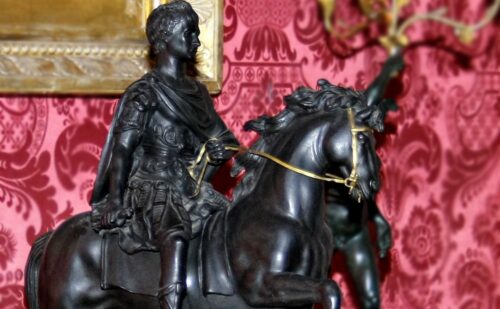Francesco Righetti - Equestrian Statue of Napoleon Bonaparte
The equestrian statue by Francesco Righetti is a symbol of the exaltation of power since ancient Rome
THE EQUESTRIAN STATUE IS VISIBLE IN: King Joachim Murat’s Second Antechamber
The history of the equestrian statue
The sculpture was made during the Napoleonic domination.
Following the first excavations of Herculaneum and Pompeii wished by King Charles of Bourbon, and with the following diffusion of images of Roman architecture done by artists such as, for example, Giovan Battista Piranesi, etc … fashion for the anctiquity exploded all over Europe, totally upsetting the decorative art area. The architecture area, however, was upset by the architect Luigi Vanvitelli with the Palace of Caserta.
During the Empire age (late Neoclassical) Napoleon Bonaparte, to exalt his military qualities, ordered to put in the decorations all the military symbolism of ancient Rome, as useful to propaganda. Among the various symbols and depictions, there has always been the equestrian statue for the sovereign.
An equestrian statue is a sculpture depicting a man riding a horse. This is a theme known to western sculpture since the archaic age of Greek art, but it will get in the Roman imperial age the function of exaltation and heroism of the sovereign. The best known is certainly that one of Marcus Aurelius in the Piazza del Campidoglio in Rome, although in our case is more similar to the equestrian statue of Carlo di Borbone performed by Canova, and now in Piazza Plebiscito in Naples. In fact, observing carefully, Marco aurelio is depicted with the frock, being him also a philosopher and writer. Charles of Bourbon is depicted with military armor as in our case.
Description of the sculpture
Burnished bronze sculpture. Burning is a chemical method useful to color metal and to protect it from assimilation. (gilding is not a burnishing)
The base is made of two marbles of different color, and with golden letters applied . Unfortunately, today, the underlying Roman numerals are missing, probably detached by soldiers during the Second World War.
The artist: Francesco Righetti (1780/1819)
Sculptor, goldsmith and bronzeist, Righetti was a disciple of Luigi Valadier, and at his death he becomes the successor, carrying on to his successful reproduction job of making replicas of ancient statues.
External link



